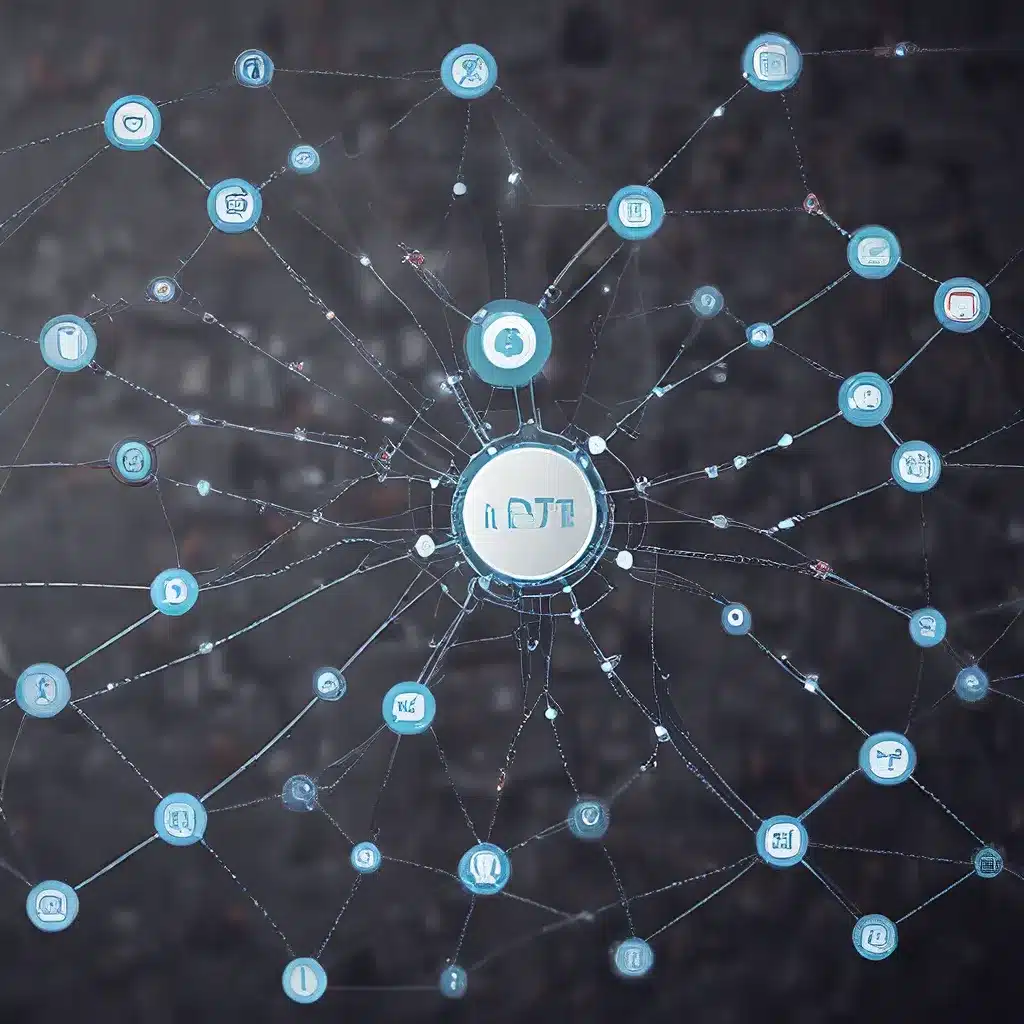
In the rapidly evolving landscape of the Internet of Things (IoT), the design and implementation of sensor networks have become increasingly critical. These interconnected systems, composed of numerous sensors and devices, are responsible for collecting, processing, and transmitting vast amounts of data. As the IoT continues to permeate every aspect of our lives, from smart homes to industrial automation, the need for robust and efficient sensor network architectures has never been more apparent.
The Challenges of Sensor Network Design
Designing an effective sensor network is no easy feat. These systems must grapple with a myriad of challenges, including scalability, fault tolerance, and energy management. As the number of connected devices continues to grow exponentially, traditional centralized approaches to network management are often overwhelmed, leading to performance bottlenecks and single points of failure.
To address these challenges, researchers and engineers have turned to distributed algorithms – sophisticated computational methods that leverage the collective processing power of multiple nodes within the network. By distributing tasks and decision-making across the system, these algorithms can enhance the network’s responsiveness, resilience, and energy efficiency.
Enhancing Fault Tolerance with Distributed Algorithms
One of the primary advantages of distributed algorithms in sensor networks is their ability to improve fault tolerance. In a traditional centralized architecture, the failure of a single node or component can have cascading effects, potentially crippling the entire system. Distributed algorithms, on the other hand, are designed to detect and mitigate these failures, ensuring that the network can continue to function even in the face of individual node or link failures.
Load balancing, for example, is a distributed algorithm that distributes network traffic equally across a pool of resources, preventing overloading and ensuring that the system can handle spikes in demand. By automatically detecting server problems and redirecting client traffic to available servers, load balancers increase the fault tolerance of the system, reducing application downtime and improving overall availability.
Another distributed algorithm, known as consensus, enables nodes within the network to reach agreement on the state of the system, even in the presence of faulty or malicious nodes. This consensus-based approach ensures that the network can continue to operate reliably, even if a subset of the nodes fail or behave in an unexpected manner.
Improving Responsiveness with Distributed Algorithms
In addition to enhancing fault tolerance, distributed algorithms can also improve the responsiveness of sensor networks. In today’s fast-paced digital landscape, users and applications demand near-instant access to data and functionality. Centralized architectures often struggle to keep up with these demands, leading to delays and latency issues.
Distributed algorithms, such as dynamic load balancing, can help overcome these challenges by continuously monitoring the state of the network and adaptively distributing workloads to the most responsive and available resources. By considering factors like server response time and active connections, these algorithms ensure that user requests are routed to the most suitable server, minimizing response times and improving overall system performance.
Moreover, global server load balancing techniques enable sensor networks to leverage geographically distributed resources, further enhancing responsiveness by directing traffic to the closest available server. This approach not only reduces latency but also improves the overall user experience by providing faster access to the desired data or functionality.
Optimizing Energy Efficiency with Distributed Algorithms
As the proliferation of IoT devices continues, the energy consumption of sensor networks has become a critical concern. Traditional centralized approaches often rely on energy-intensive data processing and communication at a few central nodes, draining battery life and limiting the scalability of the system.
Distributed algorithms offer a more energy-efficient solution by distributing computational tasks and management responsibilities across the network. Resource-based load balancing, for example, analyzes the current server load and distributes traffic to the servers with the most available resources, including computing capacity and memory. This approach not only improves performance but also reduces overall energy consumption by directing workloads to the most energy-efficient nodes.
Furthermore, consensus-based algorithms can coordinate sensor nodes to enter low-power states when not in use, minimizing energy waste and extending the lifetime of the network. By intelligently managing the power consumption of individual nodes, these algorithms ensure that the sensor network can operate reliably for extended periods without the need for frequent battery replacements or recharging.
The Future of Sensor Networks: Embracing Distributed Algorithms
As the IoT continues to evolve, the role of distributed algorithms in sensor network design will only become more critical. Fault tolerance, responsiveness, and energy efficiency are not merely desirable features, but essential requirements for modern sensor-based applications and services.
By leveraging the power of distributed computing, sensor network architects can create more resilient, scalable, and energy-efficient systems that can adapt to the rapidly changing demands of the IoT. From load balancing and consensus-based coordination to resource-aware energy management, these advanced algorithms are transforming the way we design, deploy, and maintain sensor networks.
As you explore the world of sensor networks and IoT, be sure to keep an eye on the latest developments in distributed algorithms. These innovative computational techniques are shaping the future of this exciting and rapidly evolving field, paving the way for a more connected, responsive, and sustainable world. Visit sensor-networks.org to stay up-to-date on the latest trends and advancements in this dynamic industry.